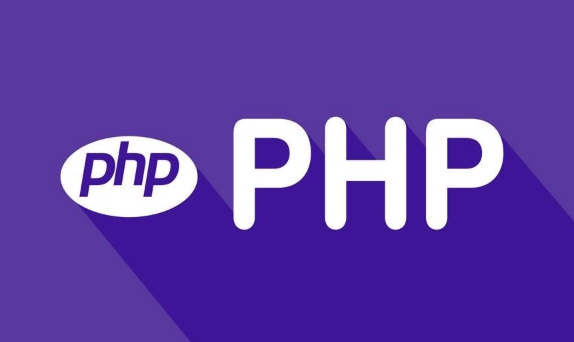 Backend Development
Backend Development
 PHP Tutorial
PHP Tutorial
 What are common PHP Security vulnerabilities and prevention methods?
What are common PHP Security vulnerabilities and prevention methods?
What are common PHP Security vulnerabilities and prevention methods?
Jul 08, 2025 am 01:34 AMPHP security vulnerabilities mainly include SQL injection, XSS, CSRF, and file upload vulnerabilities. 1. SQL injection tampers with database queries through malicious input. Prevention methods include using preprocessing statements, filtering inputs, and restricting database permissions. 2. XSS attacks harm user data by injecting malicious scripts. They should use htmlspecialchars to escape output, set CSP headers, and filter rich text content. 3. CSRF uses user identity to forge requests, preventive measures include using one-time tokens, verifying the Referer header, and setting the SameSite attribute of the cookie. 4. File upload vulnerability may cause the server to execute malicious scripts. The policy is to rename files and limit suffixes, prohibit uploading directories from executing scripts, and not place the upload path in the web directory. Good coding habits such as input verification, output escaping and minimum permission principles can effectively improve security.

PHP is a widely used server-side scripting language, which is very common in web development. But because of its widespread use, it has also become a common target for attackers. If you don't pay attention to security issues, the website may be easily hacked, leaked, or even hung up.

Below are some common PHP security vulnerabilities and corresponding prevention methods, which are easy to ignore but are very critical during the development process.
1. SQL Injection
SQL injection is an attack method that manipulates database queries by maliciously constructing input parameters. For example, when a user logs in, an attacker can enter something like ' OR '1'='1 in the user name or password box to bypass the verification logic.

How to prevent:
- Use prepared statements and parameterized queries such as PDO or MySQLi.
- Do not splice SQL query strings.
- Filter and verify user input, and use the whitelisting mechanism if necessary.
- Limit database account permissions and avoid using high-permission accounts to connect to the database.
For example, use PDO to execute a query:

$stmt = $pdo->prepare('SELECT * FROM users WHERE id = ?'); $stmt->execute([$userId]);
This way, even if $userId is tampered with, it will not affect the original SQL structure.
2. XSS (cross-site scripting attack)
XSS refers to an attacker injecting a malicious script into a web page. When other users browse the page, the script will be executed in their browser, thereby stealing cookies, session information, etc.
Common scenarios:
- Embed the
<script>tag in user comments - The content submitted by the form is not escaped and displayed directly
Prevention method:
- Use the
htmlspecialchars()function to escape special characters before output to the HTML page. - Set the appropriate Content-Security-Policy (CSP) header to limit script loading sources.
- Strictly filter content in rich text editors (such as using the HTML Purifier library).
For example, when outputting the user's nickname:
echo '<div>' . htmlspecialchars($userNickname, ENT_QUOTES, 'UTF-8') . '</div>';
3. CSRF (cross-site request forgery)
CSRF attack refers to an attacker inducing a user to click on a link or access a page, thereby sending requests without the user's consent in the user's name, such as modifying passwords, transferring money, etc.
Precautionary advice:
- Use one-time tokens (such as CSRF tokens) in sensitive operations and verify their origin.
- Checking the HTTP Referer header, although it is not 100% reliable, it can add a layer of protection.
- Use the SameSite Cookie attribute to prevent cross-site requests from carrying cookies.
The basic process of token verification:
- A random token is generated when the page is loaded and saved in the Session.
- Bring this token when submitting the form.
- The backend compares whether the submitted Token and Session are consistent.
4. File upload vulnerability
Many websites allow users to upload images or other files, but if handled improperly, an attacker may upload malicious scripts (such as .php files) and execute them on the server.
FAQ:
- Directly use the file name uploaded by the user
- No file type checked
- Upload directory executable scripts
Coping strategies:
- Rename the upload file, using the random string whitelist suffix.
- Strictly limit the file types that are allowed to be uploaded (such as only jpg/png is allowed).
- Set the upload directory to non-executable scripts (such as
.htaccessin Apache prohibits PHP execution). - The storage path should not be placed in a web-accessible directory, but can be read through scripts.
Basically that's it. PHP security involves many points, but as long as you develop good coding habits, many problems can be avoided in advance. Practices like input verification, output escaping, and the minimum permission principle, although seemingly simple, are very important in actual projects.
The above is the detailed content of What are common PHP Security vulnerabilities and prevention methods?. For more information, please follow other related articles on the PHP Chinese website!

Hot AI Tools

Undress AI Tool
Undress images for free

Undresser.AI Undress
AI-powered app for creating realistic nude photos

AI Clothes Remover
Online AI tool for removing clothes from photos.

Clothoff.io
AI clothes remover

Video Face Swap
Swap faces in any video effortlessly with our completely free AI face swap tool!

Hot Article

Hot Tools

Notepad++7.3.1
Easy-to-use and free code editor

SublimeText3 Chinese version
Chinese version, very easy to use

Zend Studio 13.0.1
Powerful PHP integrated development environment

Dreamweaver CS6
Visual web development tools

SublimeText3 Mac version
God-level code editing software (SublimeText3)
 PHP Variable Scope Explained
Jul 17, 2025 am 04:16 AM
PHP Variable Scope Explained
Jul 17, 2025 am 04:16 AM
Common problems and solutions for PHP variable scope include: 1. The global variable cannot be accessed within the function, and it needs to be passed in using the global keyword or parameter; 2. The static variable is declared with static, and it is only initialized once and the value is maintained between multiple calls; 3. Hyperglobal variables such as $_GET and $_POST can be used directly in any scope, but you need to pay attention to safe filtering; 4. Anonymous functions need to introduce parent scope variables through the use keyword, and when modifying external variables, you need to pass a reference. Mastering these rules can help avoid errors and improve code stability.
 How to handle File Uploads securely in PHP?
Jul 08, 2025 am 02:37 AM
How to handle File Uploads securely in PHP?
Jul 08, 2025 am 02:37 AM
To safely handle PHP file uploads, you need to verify the source and type, control the file name and path, set server restrictions, and process media files twice. 1. Verify the upload source to prevent CSRF through token and detect the real MIME type through finfo_file using whitelist control; 2. Rename the file to a random string and determine the extension to store it in a non-Web directory according to the detection type; 3. PHP configuration limits the upload size and temporary directory Nginx/Apache prohibits access to the upload directory; 4. The GD library resaves the pictures to clear potential malicious data.
 Commenting Out Code in PHP
Jul 18, 2025 am 04:57 AM
Commenting Out Code in PHP
Jul 18, 2025 am 04:57 AM
There are three common methods for PHP comment code: 1. Use // or # to block one line of code, and it is recommended to use //; 2. Use /.../ to wrap code blocks with multiple lines, which cannot be nested but can be crossed; 3. Combination skills comments such as using /if(){}/ to control logic blocks, or to improve efficiency with editor shortcut keys, you should pay attention to closing symbols and avoid nesting when using them.
 How Do Generators Work in PHP?
Jul 11, 2025 am 03:12 AM
How Do Generators Work in PHP?
Jul 11, 2025 am 03:12 AM
AgeneratorinPHPisamemory-efficientwaytoiterateoverlargedatasetsbyyieldingvaluesoneatatimeinsteadofreturningthemallatonce.1.Generatorsusetheyieldkeywordtoproducevaluesondemand,reducingmemoryusage.2.Theyareusefulforhandlingbigloops,readinglargefiles,or
 Tips for Writing PHP Comments
Jul 18, 2025 am 04:51 AM
Tips for Writing PHP Comments
Jul 18, 2025 am 04:51 AM
The key to writing PHP comments is to clarify the purpose and specifications. Comments should explain "why" rather than "what was done", avoiding redundancy or too simplicity. 1. Use a unified format, such as docblock (/*/) for class and method descriptions to improve readability and tool compatibility; 2. Emphasize the reasons behind the logic, such as why JS jumps need to be output manually; 3. Add an overview description before complex code, describe the process in steps, and help understand the overall idea; 4. Use TODO and FIXME rationally to mark to-do items and problems to facilitate subsequent tracking and collaboration. Good annotations can reduce communication costs and improve code maintenance efficiency.
 Quick PHP Installation Tutorial
Jul 18, 2025 am 04:52 AM
Quick PHP Installation Tutorial
Jul 18, 2025 am 04:52 AM
ToinstallPHPquickly,useXAMPPonWindowsorHomebrewonmacOS.1.OnWindows,downloadandinstallXAMPP,selectcomponents,startApache,andplacefilesinhtdocs.2.Alternatively,manuallyinstallPHPfromphp.netandsetupaserverlikeApache.3.OnmacOS,installHomebrew,thenrun'bre
 How to access a character in a string by index in PHP
Jul 12, 2025 am 03:15 AM
How to access a character in a string by index in PHP
Jul 12, 2025 am 03:15 AM
In PHP, you can use square brackets or curly braces to obtain string specific index characters, but square brackets are recommended; the index starts from 0, and the access outside the range returns a null value and cannot be assigned a value; mb_substr is required to handle multi-byte characters. For example: $str="hello";echo$str[0]; output h; and Chinese characters such as mb_substr($str,1,1) need to obtain the correct result; in actual applications, the length of the string should be checked before looping, dynamic strings need to be verified for validity, and multilingual projects recommend using multi-byte security functions uniformly.
 Learning PHP: A Beginner's Guide
Jul 18, 2025 am 04:54 AM
Learning PHP: A Beginner's Guide
Jul 18, 2025 am 04:54 AM
TolearnPHPeffectively,startbysettingupalocalserverenvironmentusingtoolslikeXAMPPandacodeeditorlikeVSCode.1)InstallXAMPPforApache,MySQL,andPHP.2)Useacodeeditorforsyntaxsupport.3)TestyoursetupwithasimplePHPfile.Next,learnPHPbasicsincludingvariables,ech





